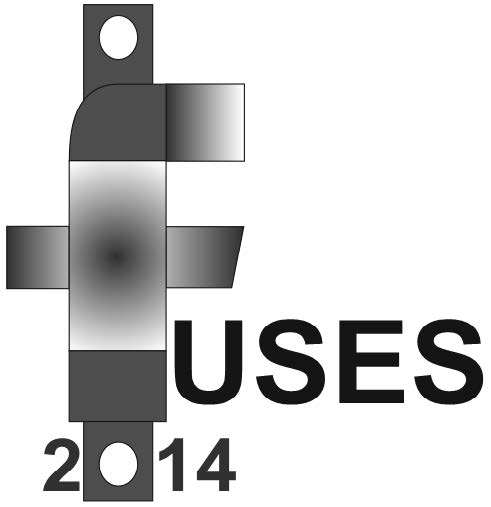PROJECTS
FINISHED PROJECTS
Optimización y fabricación de sensores LGAD para el demostrador tecnológico de un tomógrafo de muones con resolución temporal (4D-TOMULGAD)
Project PDC2021-121718-C32 MCIN (Plan Nacional I+D+I, Retos de la Sociedad). The aim of this proposal is to validate (TRL4) an innovative high-resolution muon tomographic method based on the simultaneous measurement of the muon trajectory and momentum (4D muon tomography) for the structural health monitoring (SHM) of large infrastructures. This new tomographic concept is the result of the combination of the Low Gain Avalanche Detector (LGAD) detection technology and advanced Deep Learning (DL) imaging algorithms. The two techniques underlying this muon tomographic concept have been developed in the context of the Spanish Research Agency (AEI) project Participation in the CMS experiment of LHC: Run2 and upgrade for high luminosity (FPA2017-85155).
The muon scattering radiography (MSR) or muon tomography is a technique based on the measurement of the muon trajectory before and after crossing the object under study which allows reconstructing images of the geometry and composition of the targeted object. This technique requires using two multilayer detectors, one located before the target (pre-target detector) and another one located after the target (post-target detector). MSR is frequently used Non-Destructive Testing (NDT) applications, such as the preventive maintenance of industrial equipment, nuclear safety, port and border security, and others.
This project will introduce a new method and technique for overcoming the resolution limit of the current muon tomography. In addition to its trajectory, the muon momentum will be determined by measuring the time-of-flight between the pre-target and post-target-detectors. The Low Gain Avalanche Detectors (LGAD), developed in the context of the future High Luminosity Upgrade of the LHC experiments, are, for its intrinsic compactness, robustness and reliability, the best suited detector technology for a precise determination of the muon time-of-flight; of equal importance, the advancement of the reconstruction algorithms thanks to new Deep Learning approaches and the inclusion of the muon momentum as mentioned before is expected to boost either the imaging spatial resolution or/and a very significant reduction of the time of exposure.
This proposal is a natural industrial spin-off the research teams current participation in the Endcap Timing Layer subdetector for the upgrade of the experiment Compact Muon Solenoid at CERN (LGAD detector technique) and the previous contribution of the team to the software track-based algorithms for the alignment of the muon spectrometer of the same CMS experiment (muon reconstruction algorithm).
The groups involved in this proposal provide a complementary expertise. The IMB-CNM group is the group that has created the LGAD detector concept and will carry out the sensor design and fabrication of this proposal. The IFCA group has a long tradition in all aspects of the development, production, commissioning, operation and exploitation of radiation detectors for HEP experiments; it is in charge of the production of the sensor module of the future LHC time detectors. Therefore, the IFCA group will be in charge of the integration of the technology demonstrator and its experimental validation. Besides members of the IFCA group have already an important expertise in the application of muon tomography techniques. Equally important would be the development of an extremely stable clock distribution system, which would require the expertise of the ITAInnova group in the design of high-frequency electronics.
CNM Principal Investigator: Dr. Salvador Hidalgo Villena
Starting date and duration: December 2021 – 2 years

Extract Forensic Information for LEAs from Encrypted SmartPhones (EXFILES)
EU Project (H2020-SU-SEC-2019). Technological advances and development of sophisticated functions in mobile devices led to new usages and dependencies. Mobile phones are often a key factor in criminal cases, intrusions, intellectual property theft, security threats, and more. The data stored in these devices may contain critical evidence associated with the above-mentioned crimes.
The latest generation of devices incorporate new security features and encryption schemes to “protect” the device and its associated user data. The other side of the coin is that the rapid processing of critical evidence by various information retrieval techniques is slowed down, if not made impossible. The mobile device forensics field is a challenging area for forensic analysts, particularly given the increasing number of data encryption mechanisms.
The EXFILES project aims to provide law enforcement agencies (LEAs) with new tools to extract data and associated evidence from these devices in strict legal contexts. A unique consortium of five LEAs, universities and cyber security companies from the EU have joined forces to address these challenges. Together, they defined three areas of work on technical data extraction techniques, namely software exploitation, hardware methods and combined methods.
In addition, tools and methods inspired by other areas of information security (e.g. security assessments based on common criteria) will lead to new judicial methods of accessing data for lawful investigations. Another unique dimension of EXFILES is the clear focus on the ethical and legal aspects of research and exploitation as well as dissemination and training activities for the next generation of forensic experts.
The main objective of EXFILES project is to improve Law Enforcement Agencies techniques and methods, to extract digital evidence from modern encrypted smartphones used by criminals based on holistic approach (both software and hardware).
CNM Principal Investigator: Dr. Salvador Hidalgo Villena
Starting date and duration: May 2020 – 3 years


Intelligent Reliability 4.0 (iRel4.0)
EU ECSEL Project (H2020-662133). Intelligent Reliability 4.0 (iRel40) has the ultimate goal of improving reliability for electronic components and systems by reducing failure rates along the entire value chain, i.e., chip-package-board/system. This goal is very challenging since the current trend for system integration, especially for heterogeneous integration, is miniaturization. Thus, reliability becomes an increasing challenge on device and system level and faces exceptional requirements for future complex applications. In iRel40, 79 partners from 14 countries collaborate in 6 technical work packages along the value chain. WP1 focuses on specifications and requirements. WP2 and WP3 focus on modelling, simulation, materials and interfaces based on test vehicles. WP4 applies the test vehicle knowledge to industrial pilots related to production. WP5 applies the knowledge to testing. WP6 focuses on application use cases applying the industrial pilots. As a result, reliable electronic components and systems will be developed faster and new processes will be transferred to production with higher speed. Crucial insight gained by Physics of Failure and AI methods will push overall quality levels and reliability. iRel40 results will strengthen production along the value chain and support sustainable success of Electronic Components and Systems investment in Europe. By collaboration between academy, industry and knowledge institutes on this challenging topic of reliability, the project secures more than 25.000 jobs in the 25 participating production and testing sites in Europe. The project supports new applications and reliable chips push applications in energy efficiency, e-mobility, autonomous driving and IoT. This unique project brings, for the first time ever, world-leading reliability experts and European manufacturing expertise together to generate a sustainable pan-European reliability community.
CNM Principal Investigator: Dr. Xavier Perpiñà
Starting date and duration: May 2020 – 3 years
Website: https://www.irel40.eu/


Wound Healing in Space: Key Challenges towards Intelligent and Enabling Sensing (WHISKIES)
ESA Project (Contract num. 4000129503/20NL/PG/pt). Wound management represents a substantial economic burden for the European and worldwide healthcare systems, especially in remote areas, and a critical aspect for the overall safety of future human space exploration missions. In Space, communication lags and long, if not unrealistic, evacuation times to reach Earth demand for an integrated approach involving medical knowledge and autonomous decisions to face emergency situations. To tackle this latter point, possibly relying on new and improved dressing materials, sensing technologies, and predictive models, the WHISKIES partnership will focus its efforts to: i) Increase knowledge on the underlying fundamental physics concepts and phenomena on which wound assessment and monitoring is based, ii) Improve theoretical and computational models to pave the way for the development of more robust and more accurate sensing elements, iii) Understand the effects of gravity and lack thereof on the materials for dressing and sensing, including ageing, structural, molecular, and configurational changes in order to generate protocols and procedure optimized for non-terrestrial environment, iv) Introduce gravity-related effects in the design and optimization of sensing elements and v) Develop and enhance models, algorithms, and statistics capable of predicting wound healing status and suggest appropriate actions through intelligent data analysis. Although the assembly and testing of final devices/technologies for wound healing and monitoring is not in the scope of the present proposal, the final goal of WHISKIES is to give solid foundations to the development of those technologies through a more systematic and more exhaustive studies of the changes that the Space environment (long micro-gravity conditions, remoteness) could induce on the foundational elements of wound healing and monitoring practices such as the materials’ behaviour (absorption, adsorption, thermo-solutal capillarity, self-assembly, configurational reorganization, toxicity,..), the sensing elements response (different transfer functions due to changes in external stimuli), the formulation of computational modelling, and the adaptation of statistical tools.
CNM Principal Investigator: Dra. Gemma Rius
Starting date and duration: May 2020 – 3 years

Bloques Elementales de Altas Prestaciones y Robustos para Convertidores de potencia basados en matrices de celdas de conmutación (HiIPERCELLS)
Project RTI2018-098392-B-I00 MICIUN (Plan Nacional I+D+I, Retos de la Sociedad). One of the most significant energy saving scenarios for improving the efficiency of electric power systems is AC conversion (often related with motor drives and smart grids). In all these cases, multilevel converters have shown advantages compared with the traditional two-level topologies widely spread in the industry. In spite of involving more power semiconductors rated for a fraction of the total system voltatge and a complex control, multilevel conversion provides better electrical performances and efficiency. However, the nowadays dispersion in power devices and circuits for their implementation has led to significant engineering efforts, the inability to take full advantage from scale economies to reduce costs, and the inability to concentrate efforts to improve performance. To overcome these limitations and to further improve the performance of power converters, the Switching-Cell Array (SCA) converters have been proposed. To foster the introduction of such topologies in the industry, robust and modular switching cells are required to facilitate their implementation. In addition, a complex power converter involving a large number of devices will be prone to malfunctions and reliability issues, requiring rugged implementation measures from the design phase. As a response to such need in Switching Cells (SCs), HIPERCELLS proposal will address and solve all these problems. Thus, the objectives of the HIPERCELLS are: 1) the research and development of modular and rugged SCs, including the required driving, protection and control circuitry, optimum thermal behavior, high efficiency and easy assembly characteristics (modularity), in order to boost the industrial implementation of multilevel and SCA converters in a wide range of application scenarios and power ratings. The achievement of this objective is based on the investigation of new power packaging concepts, in particular the power die interconnection solutions and the high performance thermal dissipation systems. 2) the research and development of the characterization strategies required i) to precisely analyze the ruggedness of power devices at dielevel, ii) acquiring its power losses locally; and iii) to correlate the physical mechanisms of the device failure with its electrical signature, as a means for selecting optimum semiconductors for multilevel converter applications. In this aspect, two disruptive approximations will be held. On-line monitoring with lock-in infrared thermography of devices under actual operating conditions will be carried out at die level. Additionally, such an approach will be carried out with depth-resolved techniques to better understand the device failures under overloading conditions. The latter point is crucial to performing physical simulation of the failure and correlating the physical mechanism with the electrical failure signatures observed. This step is required to determine adequate failure precursors detectable by electrical parameters monitoring with an intelligent driver. In conclusion, HIPERCELLS proposal contributes to provide a response for improving the implementation, reliability and efficiency of advanced power electronics converters in the framework of the societal challenge dealing with Clean, Secure and Efficient Energy.
CNM Principal Investigator: Dr. Xavier Jordà and Dr. Xavier Perpiñà
Starting date and duration: January 2019 – 3 years

Diamond power MOSFET using lateral/selective MPCVD growth (DiamMOS)
Project TEC2017-86347-C2-2-R MICIUN (Plan Nacional I+D+I, Retos de la Sociedad). Developments in high power electronics have been driven by Silicon power semiconductor devices, allowing the continuous improvement of power electronics, with immense implications in all the industries and especially in large scale electric energy Transmission and Distribution (T&D). Recently, strong efforts on SiC related devices have been carried out and so this material has found his niche of application. However, due to the specific requirements of new power electronics, both SiC and Silicon are currently reaching their physical limits. Therefore, a next generation of power devices should be developed based on other semiconductor materials. In this sense, synthetic diamond could clearly extend the limits of both SiC and Si technology, thanks to its outstanding electrical and thermal properties. The global objective of this Project is the progress and breakthrough in the development of novel semiconductor technologies for high voltage (> 10kV) power devices.
This proposal arises as a determined bid for the use of diamond MPCVD lateral growth to allow 3D architectures in the design of high power devices. The recent deposition of a patent for the fabrication of diamond MOSFET motivate the present project. A strong collaboration between the University of Cádiz (UCA) and the Power Device group of the CNM in Barcelona (CSIC) is proposed to attain new 3D architectures (through diamond lateral and selective growth) and develop the manufacturing for a new high power device. The recent improvements in the structural and surface quality of the diamond substrates as well as new advances in lateral and selective growth through MPCVD developed by the researchers of the University of Cadiz will favor the success of the project. The Institut Néel (CNRS), in Grenoble (France) will provide advices, knowledge and its facilities to diminish the risks related to get enough material to develop the microelectronic related processes at CNM-Barcelona which is involved in the design and fabrication of the MOSFET demonstrator.
In summary, the project will lead to a better understanding of diamond growth and diamond technological steps (deep etching, ohmic contacts, …), control of the defect generation and propagation, to finally allowing the fabrication of a normally OFF high power MOSFET demonstrator. This will allow to place Spain in a strategic position in the high power device technology.
CNM Principal Investigator: Prof. Philippe Godignon
Starting date and duration: January 2018 – 3 years and 9 months

Participación en el Experimento CMS del LHC: Pixel Upgrade para Alta Luminosidad (IMB-CNM) (CMSRUN2B)
Project FPA-2017-85155-C4-2-R MICIUN (Plan Nacional I+D+I, Retos de la Sociedad). This project is the continuation of previous FPA projects led by IFCA and is submitted as a coordinated project of four research groups: IFCA (UC-CSIC), IMB-CNM (CSIC), ITAINNOVA and University of Seville (US-GIE).The main goal of the project is to guarantee an optimal participation in the scientific exploitation of the large hadron collider (LHC) data that will become available during the years 2018-2020 and to make an optimal contribution in the High Luminosity upgrade (HL-LHC) of the CMS inner tracker.
For the HL-LHC upgrade, we aim for a substantial contribution to the construction of a new vertex detector. In addition, for the innermost layers, we propose the use of a radiation-tolerant sensing technology developed by our research team: 3D pixel sensors. Following a similar approach, albeit with a reduced scope, we aim to complete R&D of another technology of our own, Low Gain Avalanche Detector (LGAD) sensors, which provide precision timing of single tracks to resolve multiple interaction vertices.
In this sense, the main research activities will be focused to: enable IFCA as a module assembly center for the inner tracker; qualification of small pitch 3D pixel sensors ultra-resistent to radiation for the innermost layers of the future vertex detector; development of a reliable, low mass serial power distribution system; EMC studies and detailed distribution layout simulations (power cable shielding and heat dissipation, grounding, noise analysis); quality assurance and light-weight backend DAQ for demonstrator and prototype readout chips (ROC), contribution to the dessign of CMS prototype ROC; and R&D on radiation tolerance and geometrical efficiency of LGAD sensors for timing aplications.
CNM Principal Investigator: Dr. Salvador Hidalgo Villena
Starting date and duration: January 2017 – 4 years

Desarrollo de un sistema de control automático de la concentración de radón en edificios (CARE)
Project RTC-2016-5627-1 MINECO (Plan Nacional I+D+I, Retos de la Sociedad).The main objective of this project is to reduce efficiently the concentration of radon gas in buildings to levels that do not pose a risk to the health of their inhabitants and/or users, by developing a system that manages the information received by the monitors and guarantees active, selective and intelligent ventilation, acting only where and when necessary, thus minimising the impact that its exposure may have on the population. The achievement of this objective is proposed through the design, development and validation of a new active system for monitoring radon gas concentration in buildings based on the development of a semiconductor sensor for detecting alpha radiation, a radon monitor capable of providing radon concentration measurements with frequencies of less than half an hour, a system for managing the information provided by these monitors and an intelligent system that acts immediately on an air conditioning/ventilation installation depending on the real radon concentrations measured.
CNM Principal Investigator: Dr. Salvador Hidalgo Villena
Starting date and duration: March 2016 – 4 years

Green electronics with Diamond power devices (GREENDIAMOND)
EU Project (H2020-RIA-LCE-01-2014). The aim of the GreenDiamond project is to fabricate the first high power electronic device with diamond that is competitive with incumbent wide-band-gap semiconductor materials and technologies, opening new commercial and industrial opportunities. This new device will offer: Higher current density than Si, SiC or GaN transistors, Higher voltage capability than Si, SiC or GaN transistors, Lower electrical losses in high voltage applications, Realisation of novel power converter topologies (integrated switching cell), Enhanced thermal properties (lower losses at higher temperature), Compatibility with Si processes and Improved reliability in harsh operating environment.
CNM Principal Investigator: Prof. Philippe Godignon
Starting date and duration: January 2015 – 4 years


Enhanced substrates and GaN pilot lines enabling compact power applications (POWERBASE)
EU ECSEL Project (Ref. 662133). The project PowerBase has received funding from the Electronic Component Systems for European Leadership Joint Undertaking (ECSEL JU) under grant agreement No 662133. Wide band gap based semiconductors open new paths to compact power applications by enabling higher frequencies and higher efficiencies whenever silicon based semiconductors reach their performance limits. Based on these new semiconductors, seamless integration of assembly and packaging (including 3D) technologies are a prerequisite to leverage the full potential of “smart energy” applications. Because the societal need for most efficient power semiconductors, both, technically and cost-performance wise, the work on wide band gap semiconductors will be accompanied with intensive work on the current performance limits of power semiconductors based on 300 mm silicon substrates. Thus, the project “PowerBase” will improve the ability of the European industry to provide more efficient and more compact applications for energy generation, transformation and usage by early availability of enhanced power devices made in Europe.
CNM Principal Investigator: Dr. Xavier Jordà
Starting date and duration: April 2015 – 4 years


Investigación en células de conmutación inteligentes, robustas y eficientes para aplicaciones de media potencia (SMARTCELLS)
Project TEC2014-51903-R MINECO (Plan Nacional I+D+I, Retos de la Sociedad). This project contributes to provide a response on the societal challenge dealing with Clean, Secure and Efficient Energy, and it could be also applied to Integrated, Sustainable and Smart Transport as energy efficiency is concerned. Currently, several research efforts are addressed to the design of even more efficient and reliable power systems. In order to achieve large energy savings, we will focus our attention on power systems used in buildings (e.g. air conditioning inverters) and house appliances (e.g. induction cookers), as they represent a big amount of final users (2 Million of new users per year only for induction cookers), maximizing the energy saving effects derived from our research. In this framework, we propose to use heterogeneous integration to manufacture optimized and highly efficient smart switching cells, as the elementary building blocks for power converters implementation. These smart cells will include two sub-circuits: 1- A power stage with a switch and a diode connected in antiparallel configuration to implement a current free-wheeling path. 2- An integrated smart control circuit, to improve the reliability (protection functions), efficiency and power density processing of the power devices. This kind of solution is innovative in the mentioned target applications, typically operating with devices in the 600V–1200V range. As a main initial hypothesis, we expect to be successful in our approach by the following reasons: i) If a smart control circuit is integrated in a switching cell, devices are controlled in optimum conditions (low interconnection parasitics) and are protected against abnormal events. In addition, a certain intelligence is provided to the switching cell (added value and functionality), ii) Determining which commercially available power devices are the most rugged ones for a given application scenario and explaining why this occurs will improve the whole system reliability, the understanding of the root causes of failure of power devices, and the information at system level when operating in the field. Developing the tools and methods for accurate power device electro-thermal characterization will be one of the key issues of the project. iii) Heterogeneous integration allows compactness and weight reduction of the final power system. This project aims at designing, assessing and proving in a real application that a switching cell oriented to building and house appliances applications can be more rugged and reliable when: i) a smart driver is integrated in the package, ii) proposing/exploring new design strategies for reliability/ruggedness at device level, searching for commercially available devices more rugged under certain overloading conditions, iii) long-term reliability issues are considered at the early stages of the switching cell design, analyzing the effects on the packaging and used devices, iv) analyzing that the thermal performance degradation due to the packaging ageing does not limit the device operation. Finally, it is worth to point out that several enterprises have manifested their interest in this development. In particular, the research team will receive the feedback from BSH GmbH concerning the specifications required by a useful smart switching cell, and the potential of using such switching cells in the scenario of inductive cooking. This approach will highlight the benefits of this investigation addressed towards a final user and evaluate its industrial and energy saving impact.
CNM Principal Investigator: Dr. Miquel Vellvehi and Dr. Xavier Perpiñà
Starting date and duration: January 2015 – 3 years

Participación en el Experimento CMS del LHC: Run 2 y Pixel Upgrade para Alta Luminosidad (IMB-CNM) (CMSRUN2)
Project FPA2014-55295-C3-2-R MINECO (Plan Nacional I+D+I, Retos de la Sociedad). This project is the continuation of previous FPA projects led by IFCA and is submitted as a coordinated project of three research groups: IFCA (UC-CSIC), IMB-CNM (CSIC) and ITAINNOVA. The main goal of the project is to guarantee an optimal participation in the scientific exploitation of the hadron collider data that will become available from 2015 onwards at a center-of-mass energy of around 13 TeV. This will be achieved through the continuity of our participation in the CMS (Compact Muon Solenoid) experiment of the Large Hadron Collider at CERN. This project includes contributions to several aspects of the experiment: physics analysis, detector upgrade activities for the future high-luminosity operation scenario of the LHC (phase 2 upgrade) and detector maintenance and operation.
In this sense, we will continue and reinforce our research lines to cope with the new detector challenges introduced by the high-luminosity LHC operation expected by 2022, an upgrade of the vertex detector including a dedicated R&D on new vertexing technologies is mandatory at this stage. The IFCA, IMB-CNM and ITAINNOVA groups participate actively in this upgrade, leading the implementation of extreme radiation-hard “3D” silicon pixel sensors for the innermost vertex layers and the development of a power distribution system able to deal with the very high expected power consumption while keeping a small material budget.
CNM Principal Investigator: Dr. Salvador Hidalgo Villena
Starting date and duration: January 2015 – 3 years

Silicon Carbide Power Technology for Energy Eficient Devices (SPEED)
EU Project (Ref. 604057) Highly efficient power electronics (PE) applied in power generation, transmission, and distribution is a key element for the ambitious goals of renewable energy penetration in Europe. A new generation of power electronic devices will greatly improve the energy efficiency, increase power quality, and enable continuous voltage regulation, reactive power compensation and automated distribution. New power electronics devices will result in a better integration of distributed energy resources like local energy storage, photovoltaic generation, and plug-in electric vehicles. The research on new generations of high-power semiconductor devices, highly efficient and able to operate at high voltages (even above 10kV), is crucial for reducing the cost of power electronics in grid related applications, hence enabling a breakthrough in the way we generate and distribute energy. It´s been known for some time that the material properties of silicon carbide (SiC) are superior to those of silicon (Si) for these applications. The development of SiC power electronic devices with suitable characteristics will lead to new applications and markets in power generation and distribution and will insure that EU industry remains at the forefront of the fast developments in the field. SPEED Project pools seventeen manufacturers and researchers from nine European countries, who will work together for three years, with a common goal: the development of the next generation of power semiconductors based on SiC with specific applications in wind converters and the new generation of Solid State Transformers (SSTs).
CNM Principal Investigator: Prof. Philippe Godignon
Starting date and duration: January 2014 – 4 years
https://cordis.europa.eu/project/id/604057


Current limiting device to address DC aeronautic power distribution system (FUSES2014)
EU Project (FP7-JTI-641336) Electrical Power Distribution Systems (EPDS) employed among others in Aeronautics are usually protected by active electronic driven switching components. In order to reduce response time and simplify protection driving, fuses are being considered as one of the prerequisite for the CleanSky HVDC network.
The development of a new generation of hybrid and/or full static current limiter solutions, able to operate above 51000ft, is crucial for specificities of aircraft applications. From one side fuses technologies could be adapted to parts of the requirements but may not fully comply. On the other side, the material properties of Silicon Carbide as semiconductor, clearly superior to those of Si, should lead to enhanced hybrid current limiters with much better performance than conventional fuses or Si based solutions.
Pooling a leading fuses and protection devices manufacturer, and two research groups, FUSES 2014 aims at a breakthrough in current protection technology to build either a hybrid and/or a full static current limiter solution with different benefits than existing solutions. Well stablished and new methodologies will be adapted to fuses and SiC technologies and optimized to make them a practical reality.
CNM Principal Investigator: Prof. Philippe Godignon
Starting date and duration: September 2014 – 2 years
https://cordis.europa.eu/project/id/641336


Desarrollo de dispositivos de SiC Trench MOSFET para módulos de potencia de alta frecuencia de conmutación (TRENCH-SIC)
Project TEC2011-22607 MINECO (Plan Nacional I+D+I, Retos de la Sociedad) The main objective of this project points out to increase the efficiency of power electronics systems (rational use of energy) for their use in automotive or aeronautic applications where severe ambient conditions are present. Concretely, the final goal is the research and development of a full-SiC power module with working switching frequencies and temperatures beyond the Si limit (20 kHz and 175ºC) and study their physical limitations. For this propose,a SiC power MOSFET based on trench technology with breakdown voltage values of 1.2 and 3.5 kV will be develop. Such devices, which are not in the market and represents the state-of-the-art-device, will be used to implement a leg of a power converter together with SiC Schottky Barrier Diodes in a 20A power module. Thanks to the superior electro-thermal properties of SiC, the weight, the volume and the cost of the power electronic system is reduced and it is foresseen an energy consumption reduction of 50% by using these new conceptual advances in power electronics controlled motor drives. The use of trench technology in SiC allows higher power integration levels, a higher current density capability, and an improved channel mobility in comparsion with the planar approach. However, to develop the Trench SiC MOSFETs devices some key issues in existing SiC process technology must be improved. Concretely, the development of the trench process formation, the optimization of the dielectric/SiC interface and the development of a novel trench edge termination will be carried out. In addition, an exhaustive electrothermal phenomena study will be performed with the aim of avoiding problematic issues (non-homegenous current, current crowding) which can lead to the device destruction. Since many of the simulation input parameters are unknown or wrong for this wide band-gap semiconductor, an innovative local electro-thermal characterisation at die level will be develop in the framework of TRENCH-SiC project which include advanced non-invasice techniques within (IIR-LD, FPI interferometry-based thermometry) and on the top surface (IR thermometry) of the die. These studies will be correlated with standard electrical reliability tests, such as surge current, short circuit capability, overload inductive turn-off, and gate oxide degradation. In parallell, a high switching frequency (>20kHz) power module will be developed with the technology existing at CNM. A rigorous procedure to obtain thermally optimum package designs based on 3D simulations will be established, taking into account reliability aspects (induced stresses), both high voltage and high current capability, and electromagnetic modelling (stray elements optimisation). Finally, a complete analysis of reliability issues will be perform since it is expected to be found them in high switching frequency applications and the new approaches followed for pacakging the power devices such as wire-bonding lift-off, reconstruction of the die upper metallization, electrothermal mismatching problems, solder delaminations, etc. Thus, there are a large number of unknown reliability issues in this field, in which TRENCH-SiC will contribute to detect, answer, and solve.
CNM Principal Investigator: Dr. Xavier Perpiñà
Starting date and duration: January 2012 – 3 years


